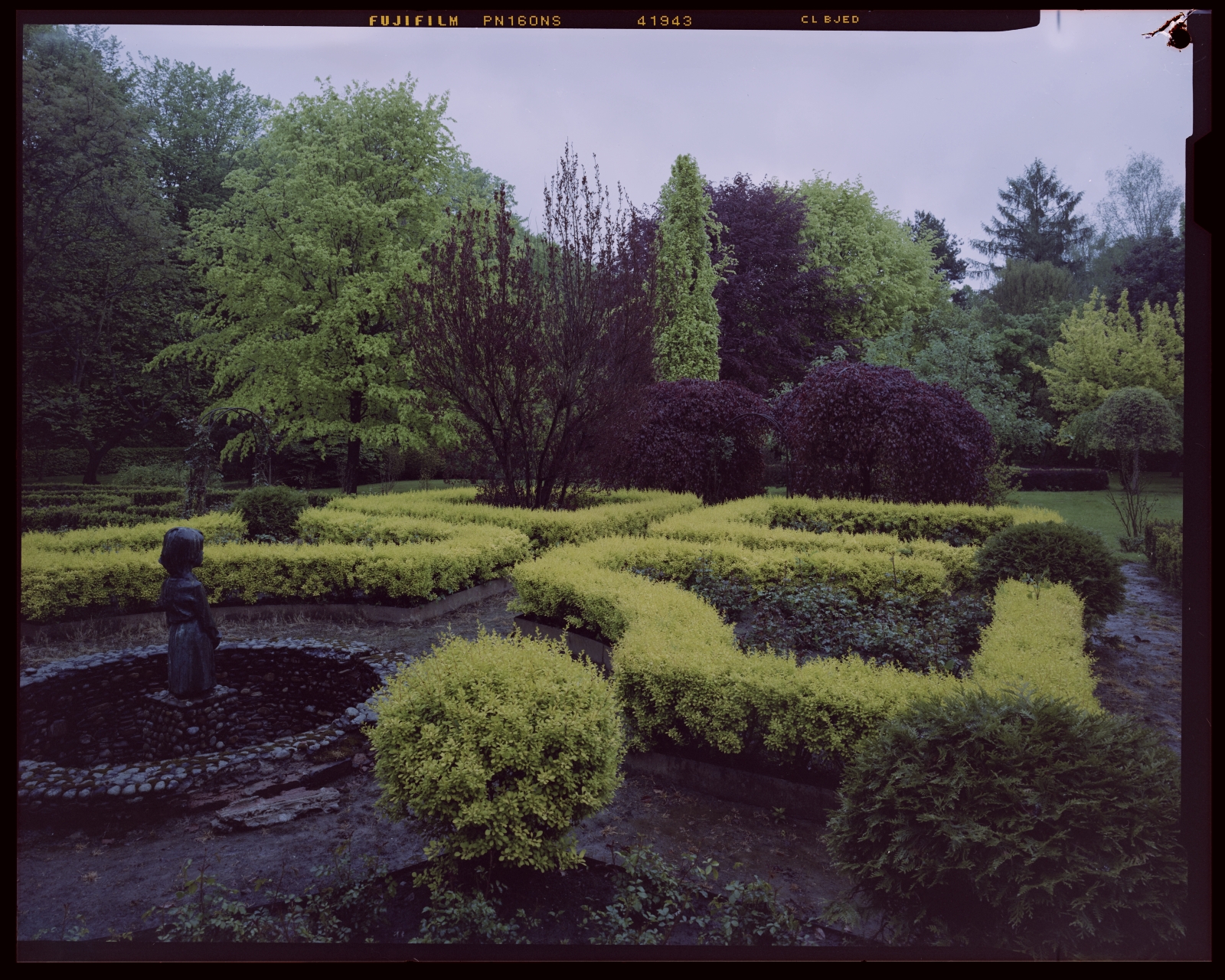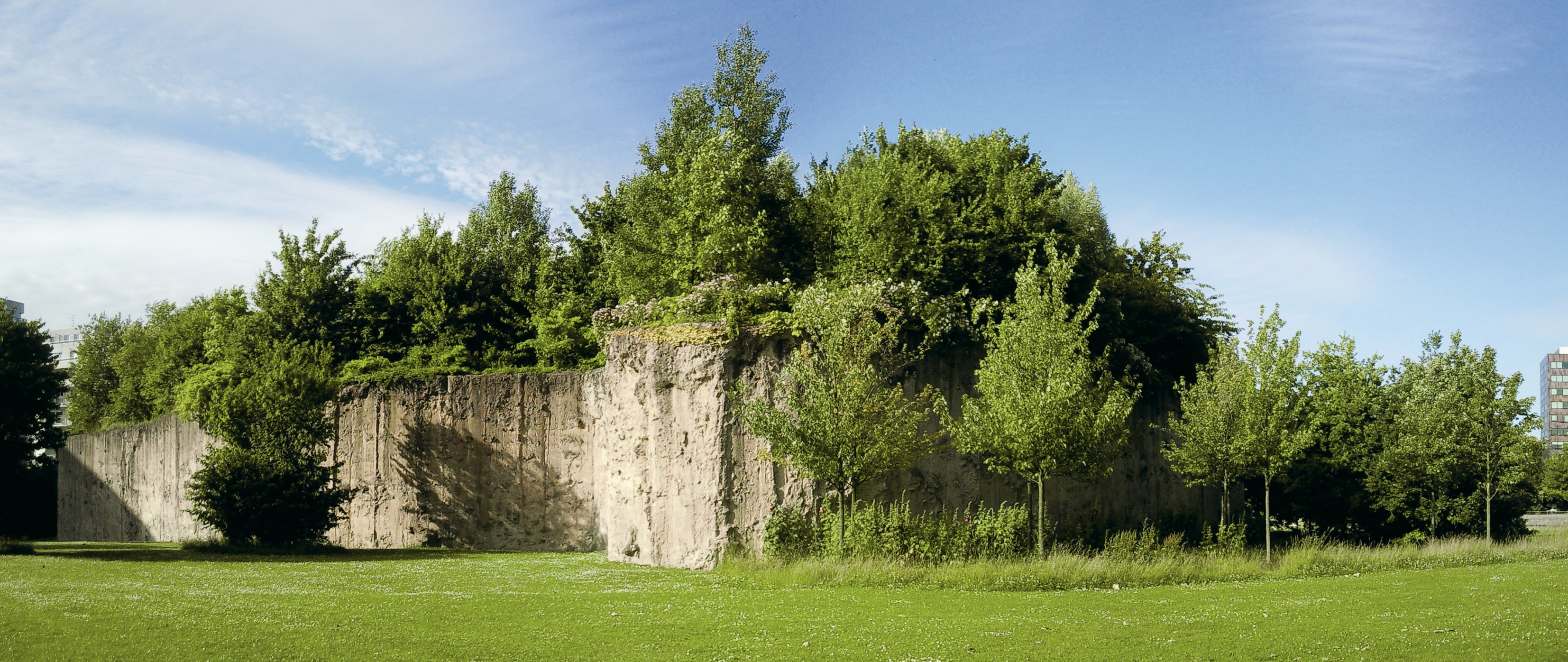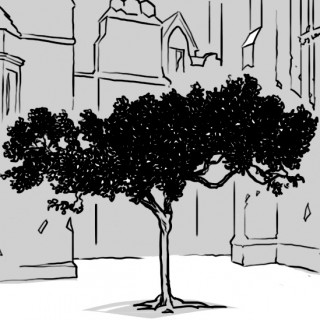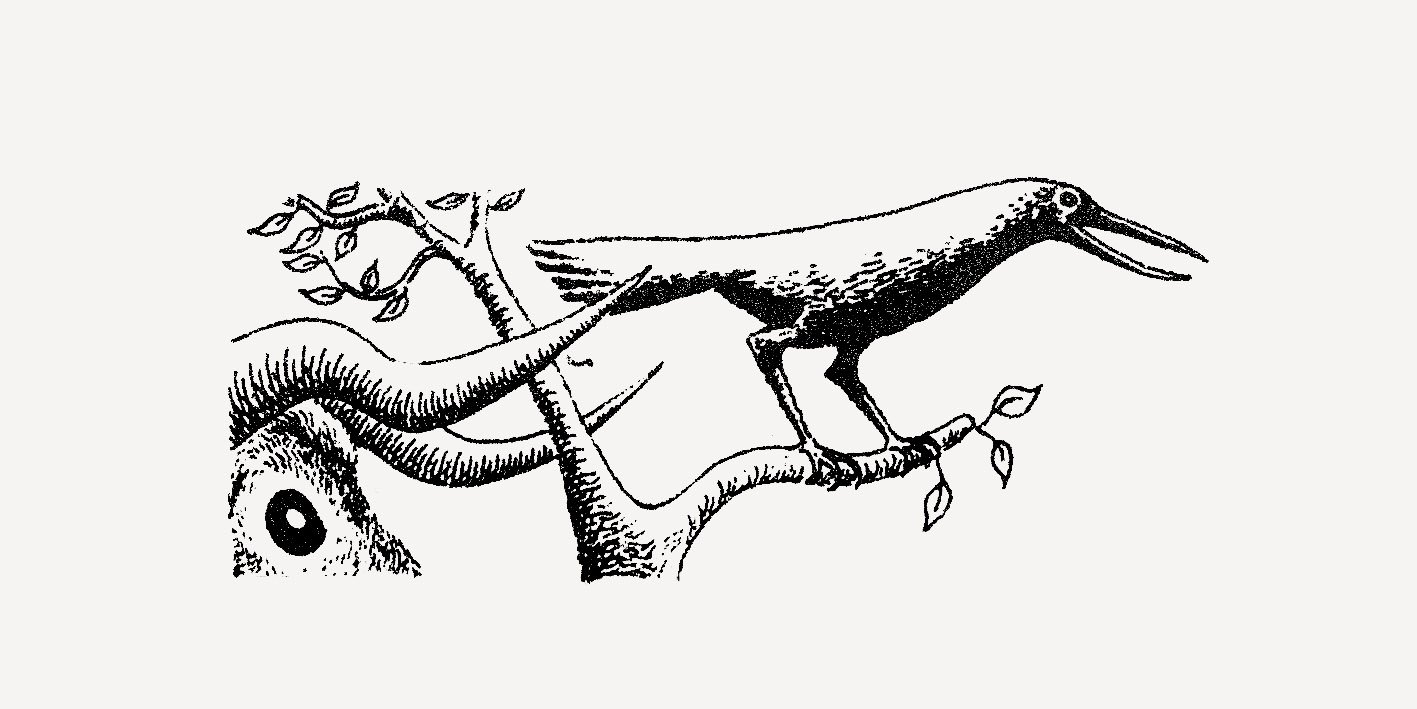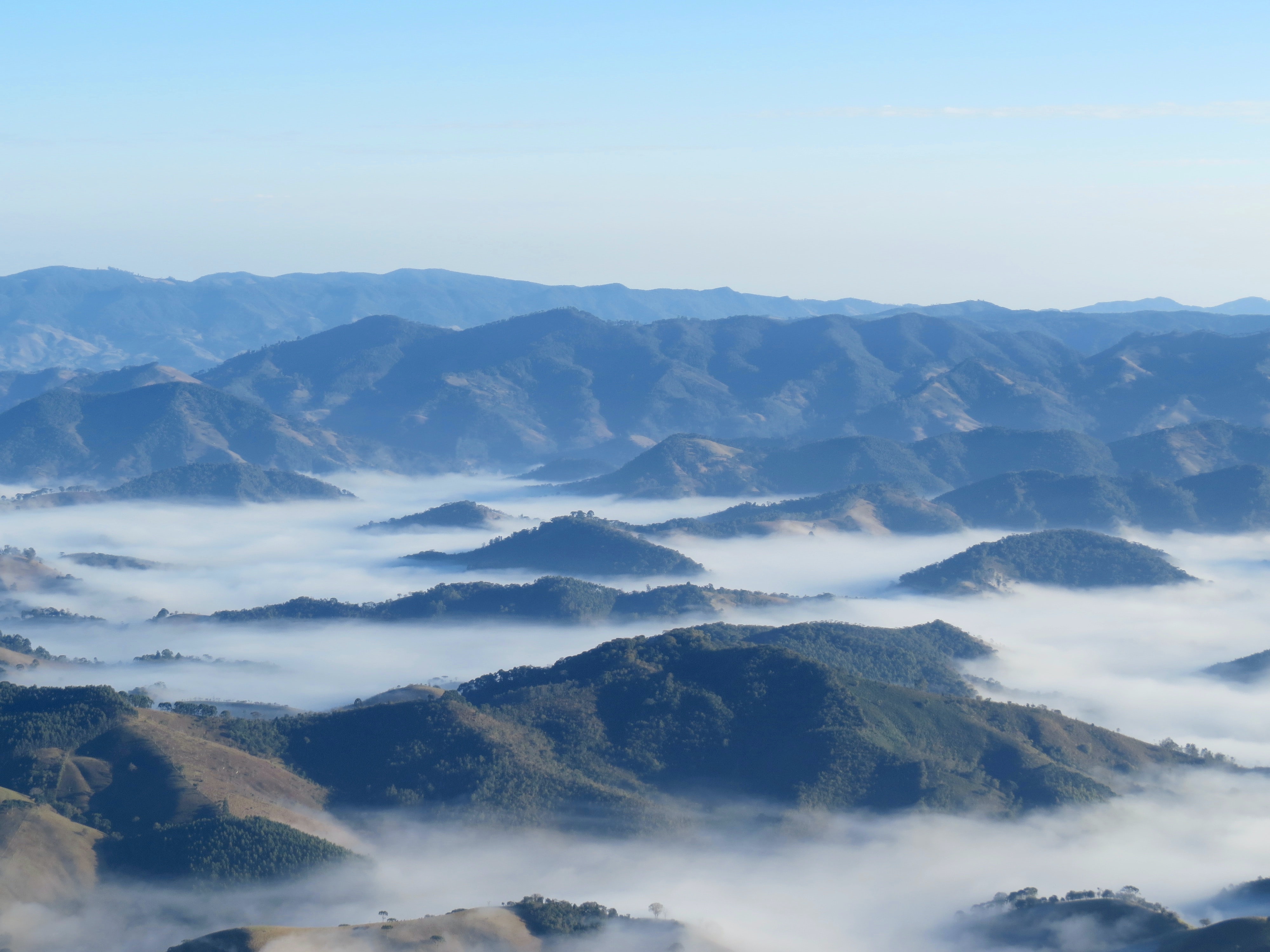
Krzysztof Penderecki “creates his garden like a score, note by note”. There are oaks, hornbeams, ash, linden and maple trees growing here, but also rare species of trees brought by the composer from China, Louisiana, and other parts of the world.
14th May 2019 was unusually cold. At 5.30am in Lusławice, it was around 8°C. I opened the room window overlooking the inner courtyard of the dormitory at Penderecki’s European Music Centre – it was raining. I was sleepy. The previous day, workshops for young composers began, the ‘masterclasses’ organized together with the Kraków Film Music Festival. Throughout the night, bedroom doors slammed, and when I finally fell asleep, I was awakened by someone whistling the toreador’s aria from Carmen.
Opened in 2013, the centre is an elegant building with two concert halls, rehearsal rooms, a dormitory and a canteen. It is located directly opposite the Lusławice Manor, surrounded by an arboretum composed and lovingly supervised by Penderecki. Penderecki likes to start composing at 6am (and even earlier in the summer). At this hour – together with photographer Maciej Herman – we stand in front of the garden gate. Our guide is Stanisław Dudek, a gardener who knows every branch here. He has devoted his entire professional life to Lusławice: his knowledge and feeling for this place are enormous.
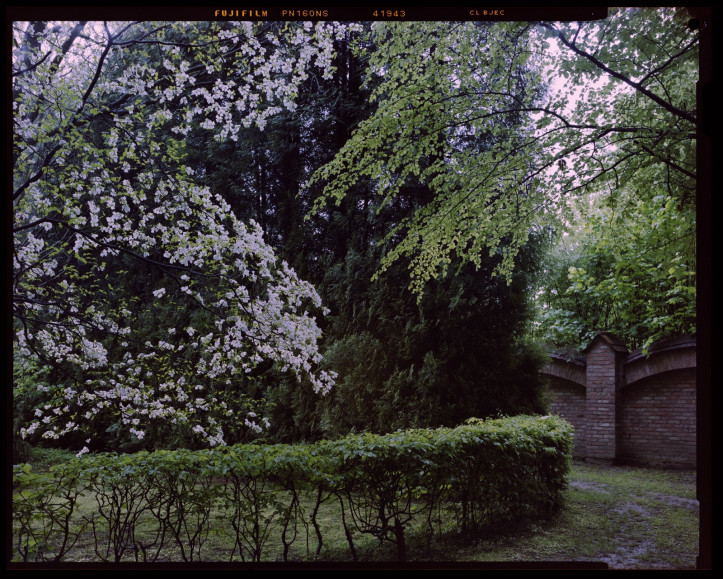
I spend a dozen or so hours in the May cold and rain, in this ‘secret garden’ extending over the size of one third of the surface of the Royal Łazienki Park in Warsaw. In my wellies, I follow the guide around the gardens. Later, I stand around for hours holding an umbrella over the camera – it is a large-format film camera, set up on a tripod, you need a large umbrella to protect it from the rain… The hours spent in silence among the enchanting, lush greenery of the Lusławice trees turn into a kind of meditation. This time allows me – at least to some extent – to understand and feel the words Penderecki spoke in conversation with his close friend, the outstanding musicologist Mieczysław Tomaszewski: “Here, I write different music than in Kraków. Not to mention the hotel room, where I often also have to write. Here, a different kind of music emerges. Here, with one stroke of the pen, a clarinet quartet was created. Here, on the porch, I composed large fragments of Te Deum, back then the court was not completely finished yet, renovation work was still underway, labourers were still hanging around and it is also a different kind of song than those written elsewhere.”
The manor from Malczewski’s paintings
Contemplation. On the veranda in Lusławice from 1920 is one of many paintings by Jacek Malczewski portraying a fragment of the Lusławice Manor House. Malczewski spent a lot of time in Lusławice – his brother-in-law was the owner of the manor. Lusławice is the prototype of all manor houses in Malczewski’s paintings. Malczewski’s brother-in-law’s portrait hangs in Lusławice to this day. In the early 1970s, Penderecki bought Lusławice from his grandson, Adolf Vayhinger. At the turn of the 17th century, long before it became an inspiration for the young Polish painter, the Lusławice manor was a Calvinist centre; it even housed a printing press. A spiritual leader of the Arians found shelter here: Fausto Sozzini from Florence, after he was brutally beaten by Catholic students in Kraków. However, he did not regain full strength and soon died – his grave is in the park. In 1933, the celebrated architect Adolf Szyszko-Bohusz designed the Mausoleum.
The history of Lusławice made a great impression on Penderecki. After the war, the Manor housed a fertilizer warehouse, and later a maternity ward and an orphanage. In the 1970s, the manor and the park were in a deplorable condition. Vayhinger, who on a daily basis lived in Katowice, maintained two rooms for himself. As luck would have it, when Penderecki came here for the first time, he met the owner sitting on the veranda. Was it a conversation about a rare tree specimen – a tulip poplar tree growing just outside the court – that immediately broke the ice between the men? At any rate, the transaction took place very quickly.
‘The bravest grandfather’
Where did the composer’s botanical and dendrological passion come from? An important figure in Penderecki’s life was his grandfather Robert Berger, who took him for long walks, encouraged him to learn Latin, and with whom he prepared herbal remedies. (Latin is also the language used by gardener Stanisław Dudek to identify the species of Lusławice trees; moreover, many of them come from distant climatic areas and do not have Polish names at all.) The dendrological tradition goes back a generation, as Berger’s father was a forest inspector at the estate of Count Raczyński near Dębica. This was the reason why Penderecki’s multicultural family – his grandmother was Armenian, his grandfather German – settled in this part of Poland. “Johann Liber Berger, Forester Berdech, great-grandfather of the composer Krzysztof Penderecki” – such an inscription appears on the grave renovated a few years ago, as described by Wojciech Berger in the book Opowieść dla córek i wnuków [Tale for Daughters and Grandsons].
Family ties are also extremely important in the Lusławice garden – taking care of memory, saving the dead from being forgotten, as well as leaving behind messages for the living. “Sometimes you have to open the door behind you. Although the landscape that we see over our shoulder, from a distance, appears really different,” says Penderecki in an interview with Mieczysław Tomaszewski. Lusławice is also a monument to the future – or at least this is how I understand the intersecting alleys of Polish and American oaks planted by the composer on the occasion of his granddaughter Marysia’s birth. To make sure they’d grow well, the professor threw five dozen eggs under each tree – a method recommended in a 19th-century farmer’s calendar. The granddaughter was delighted with the park, and while still in the pram, “she laughed at leaves moving up in the trees”, recalls Elżbieta Penderecka in an interview with Katarzyna Janowska and Piotr Mucharski. She adds: “You can see the real Krzysztof when he is with his granddaughter. Then he reveals his true self.” No wonder that Kalina Cyz’s children’s book about Penderecki – entitled The Bravest Grandfather – paraphrases the title of his opera for children, The Bravest Knight.
The score of a garden
Taxodium (which grows in the swamps of Louisiana), Davidia inolucrata (a tree from China that, when in bloom, looks like scattered handkerchiefs or a flock of white birds preparing for flight), or Fagus aspenifolia (a variety of beech with serrated leaves that resemble decorative pasta) are just a few examples of the extraordinary trees from the Lusławice collection.
When Penderecki bought Lusławice, the garden had several hectares, but he immediately planned his arboretum to cover a much larger space. Over time, he acquired neighbouring plots – today the garden area is nearly 30 hectares. Old trees – oaks, hornbeams, ash, linden, maples – have been preserved in their original space near the manor. From the very beginning, Penderecki brought seedlings from all over the world to Lusławice, from the places he visited during his conducting tours and composer’s journeys: from Spain to Korea, Canada to Venezuela. Many of them did not survive their first winter, but the number and the quality of survivors is stunning.
Tree enthusiasts and experts make pilgrimages to Lusławice, including trips from Great Britain – supposedly the country of gardeners. They are impressed that many of the trees collected by Penderecki are specimens that can be seen only in very specialized dendrological gardens. In Lusławice, the exotic, alien, unusual species are planted together, “they surprise each other”, as Tomaszewski notes. In an interview with the composer, he says that: “In nature, Lebanese cedar will never grow next to American redwood. But here, in your garden, everything is possible.” Penderecki replies: “I am building a dendrological collection and I am trying – like a philatelist – to complete each started series. I do everything to gather here all the species, varieties and garden forms that can grow in our climate.”
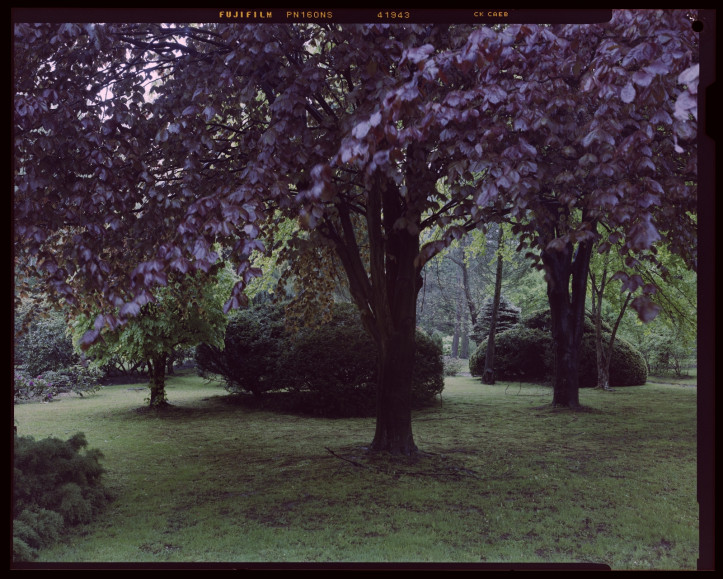
The catalogue of Lusławice trees contains many interesting species, but no less fascinating are the varieties of the same species, often well-known in Poland: maples from around the world (Manchurian, Japanese, Chinese), the different varieties of beech, conifers, (including rare Asian varieties of coniferous trees)… It is fascinating to watch the respective ‘variations on a theme’ – in place of scherzando, amabile or lamentoso – weeping or columnar trees, in different colours, with different sizes and shapes of leaves.
In the introduction to the album Lusławice Gardens, Penderecki admits that the thought of “creating his own garden, like creating a score, note by note”, has accompanied him since childhood. “Here, each tree has its place. Often reserved in advance, waiting for a particular ‘chord’. Awaiting a particular shape or colour. And the same might happen when creating a musical score. When I write music, I often leave a blank space where I cannot yet find the equivalent of sound or chord that I need. I leave it blank, but I know more or less what it should look like.” Penderecki gained knowledge of gardens from literature and from traveling to botanical gardens around the world.
At the same time, the idea of Penderecki’s garden goes far beyond what a manor park might look like; it bears a distinctive, individual mark. “I am a mannerist,” Penderecki confesses, “I am attracted to polystylism, it is a postmodern garden.” What impressed me the most about Lusławice’s composition is the width of its horizons. Because the terrain is undulating (a technique employed in the design of English gardens), and thanks to the impressive small architecture – Italian terraces, a Japanese bridge, a maze – the garden presents the visitor with a constant change in perspective, stimulation, revival, all of which is extremely important for every artist and for every human being.
“What a great book I could write here!” I thought in Lusławice. This garden allows the soul to travel. It delighted me so much that I had tears in my eyes, I felt like a child, happy and dazed by a new experience.
The artist in a maze
Stanley Kubrick used Penderecki’s The Awakening of Jacob several times in his film The Shining. The maze plays an important role in this film. There are several labyrinths in the Lusławice garden, including one that is quite dangerous. “I do not advise anyone to enter, because they will not find their way out,” says Stanisław Dudek. Penderecki found the plan according to which the maze was built in a book about labyrinths – it was engraved on a stone found in the ruins of a 13th-century chapel in Genainville, France. This plan had never been implemented before until the planting of the maze consisting of 15,000 hornbeam trees in Lusławice. When mowing the grass, “whenever he gets to the middle of the maze, the gardener comes back to the beginning, because he cannot find the places he wants.”
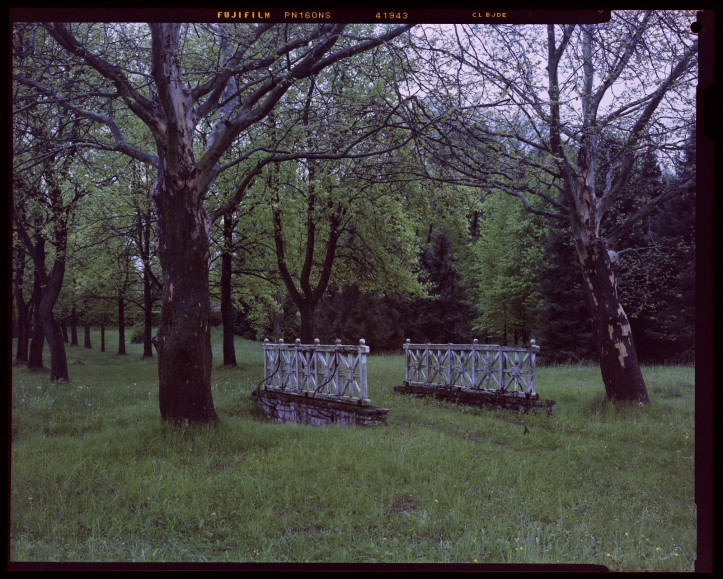
In many conversations, Penderecki emphasizes how important it is for him, as an artist, to find a place where he feels at home, where he can take refuge and calm down. It is a necessary condition to create, to be able to give something to the world. Paradoxically, the maze can provide a refuge. The labyrinth is also a metaphor for searching and getting lost – a path with which the composer identifies.
The book Labyrinth of Time: Five Lectures for the End of the Century collects Penderecki’s ‘master lectures’. In one of them, entitled “The Artist in a Maze”, he says that in an era of information overload, the imagination suffers and “[…] escape becomes a natural impulse, closing oneself in one’s own world – but will it save our creative forces? In Lusławice, I surrounded my property, my garden, with a high wall, because I believe that – to follow symbolic thinking – this wall would strengthen the internal forces growing within. Such a hortus conclusus is a world upon itself, my own universe, whose harmony I can shape. Marking up the rows of trees, establishing lawns and flowerbeds, I get the sense of building my own Arcadia […]. Following the historical plans, I have also set up a labyrinth, a maze in my garden. Here, I feel confident, I know the way in and the way out, I built it according to the principles of costruzzione legittima. It is different with the maze that is creativity and the world. How to achieve artistic goals in the tangle of roads, this common confusion that we share? The knowledge that the maze – the metaphor of our existence – is always a combination of irrational elements, and some unpredictable and predictable elements that we can control might provide some comfort. Only wandering, taking the longer path leads to fulfilment.”
Meetings in the garden
“A visit to Lusławice is always a journey towards a world that stuns with the magic of the garden, a strange ancient energy, the Arian spirit of this place, the noble beauty, hospitality perfected every step of the way,” says Robert Piaskowski, long-term programme director of the Kraków Festival Office, who often cooperates with Elżbieta and Krzysztof Penderecki. In May 2018, he visited Lusławice with Elliot Goldenthal, the American composer and winner of an Oscar for the music for the film Frida. How did Goldenthal remember this meeting? The smell of peonies, asparagus, venison and strawberries with cream for dinner; pear tincture. Talking about Stravinsky’s correspondence with Penderecki, about Wojciech Kilar and Henryk Górecki, the conductor Kent Nagano, and the Salzburg festival. The smell of the garden, rhododendron and jasmine blossom. And above all, a walk in the garden: “Mr Krzysztof leading the way, Elliot with difficulty after a hip injury, which he acquired getting on the subway in New York, us at the back, tired of the heat. Mr Krzysztof keeps rushing us: faster, faster. A moment later, a concert of hundreds of frogs in the garden ponds. Two great composers, each from a different world and from a different moment in the history of music, stood still listening to the soaring harmonies, the repetitive symphony of seduction.”
The garden as such creates a meeting space – with oneself, but also with others. Conversations conducted while walking on garden paths differ from those conducted within the four walls or in the city. I perceive Lusławice as a philosophical garden – walking around it broadens one’s horizons, facilitates ‘meeting’ oneself, aids creative thinking, and – by a change in perspective – can give hope, which, according to Penderecki, “we must look for in the paradoxes”.
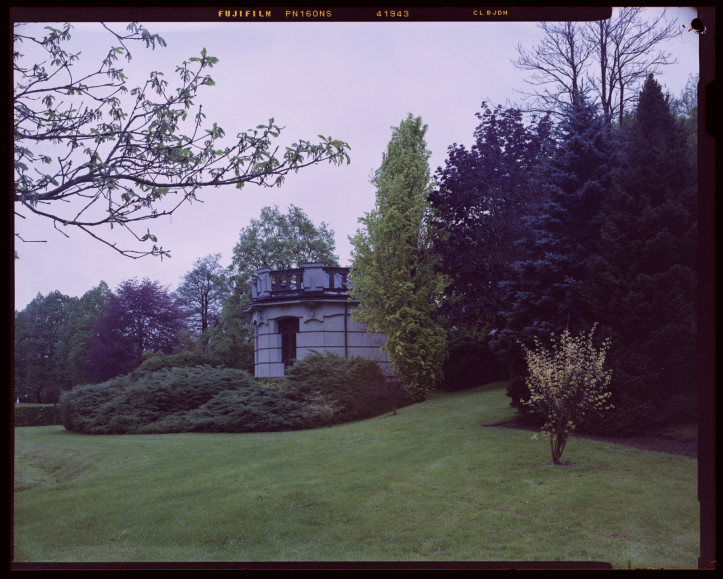
Organizing my trip to Lusławice was not easy. Luck had it that I missed the Minister of Culture and National Heritage when I arrived there. On 13th May 2019, a letter of intent was signed in Lusławice, thanks to which, in the future, the Lusławice Park and Manor will be handed over to the Polish state. Penderecki decided to hand over his work in order to leave something behind on this Earth. On the website of the Ministry of Culture I read: “I think it is the best we could do to ensure the future existence of the garden.”
The following morning, when we walk through the garden with Dudek, I see Penderecki from afar. Having just had his breakfast, he is working on the veranda overlooking his beloved trees. Among the notes that I took with me to Lusławice, I have, among others, a fragment of a lecture by Penderecki entitled “The Internal Tree”. There, the composer talks about his fascination with the Orthodox liturgy on the one hand, and Western culture with its rationalism but also its expressive abilities on the other. “After all, in its broadest sense, the Mediterranean culture is my home – and it stems out of this invigorating combination of various elements and influences. […] Alchemists believed that self-improvement must go hand in hand with the regeneration of nature. Planting trees in Lusławice, in which I found my Odyssean haven, Ithaca, I get the feeling of purifying myself, reaching the essence of myself and the essence of music.”
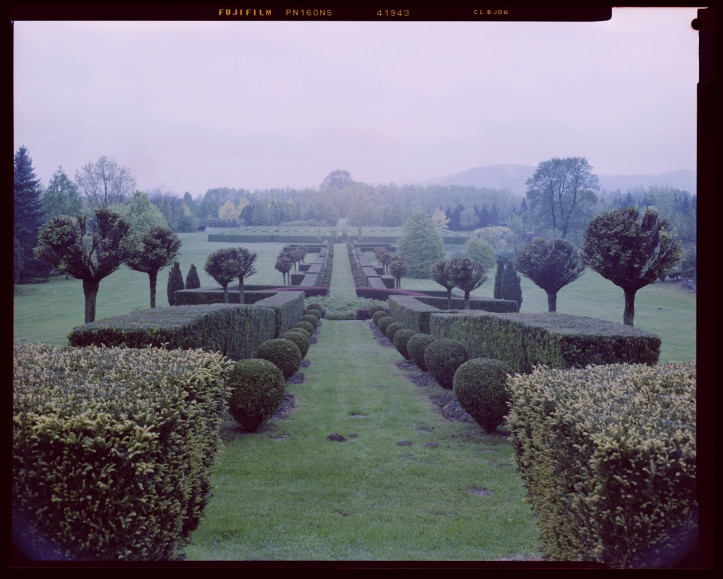
Many thanks to Magda and Wojciech Berger, and Robert Piaskowski.
In preparing this article, I used the books: Labyrinth of Time: Five Lectures for the End of the Century by Krzysztof Penderecki, Lusławice Gardens and Lusławice Talks by Mirosław Tomaszewski, Penderecki. The Family Saga by Katarzyna Janowska and Piotr Mucharski, as well as the Beethoven Magazine (No. 25).
Maciej Herman:
is an independent photographer. His works have been shown at numerous individual and group exhibitions. For his “Shipyard” series, he received the Grand Prix at the International Festival of Industrial and Industrial Photography Foto-Pein. His photographs have been published in many books and magazines, including Newsweek. He mainly focuses on two topics: social issues and the search for the non-obvious matter of places. His preferred technique is black-and-white large format photography.
Translated from the Polish by Joanna Figiel


